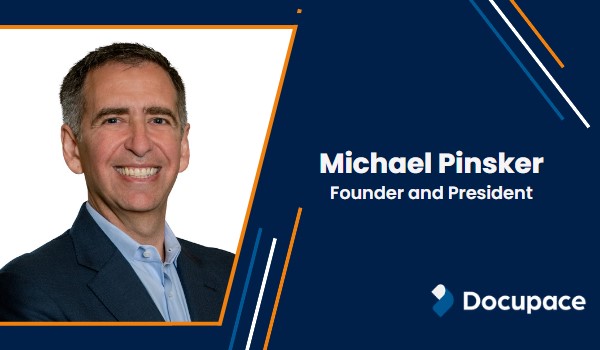For years, firms have emphasized their front-office business in lieu of their back-office operations. Not just in wealth management, but across industries.
While many advisory firms have turbocharged their marketing and client acquisition capabilities and have sought to create “beautiful” client experiences, they’ve also risked becoming “out of balance” by leaving their back offices behind, said Michael Pinsker, founder and president of Docupace.
“A sustainable business balances both sides of the coin, on the front end you need to be able to service clients with the best capability possible, but you also need to be able to establish and maintain the relationships on the back end,” said Pinsker. “You need to be able to do it all efficiently, because if you don’t it will inevitably come back to bite you.”
In 2023, developing and applying technology to better front- and back-office operations is no longer an “either/or” question.
Traditionally, financial firms have had good reason to focus on the front office, said Pinsker
“If you think of any business, the No. 1 priority of the business, and how businesses can survive, live and continue to thrive in the future, is based around the ability for that business to generate revenue by serving its clients,” he said. “It’s about making sure that the revenue fuels growth—that it creates the necessary kind of coverage on the other expenses, which would include the back office, but ultimately means that the primary focus of any business is on the front line for the most part—whether it’s startup, a mid-size business or an established business.”
In a wealth management firm, the front office is where prospects are met, clients are engaged, plans are made and investment frameworks are set—all the tasks that advisors themselves tend to find most meaningful.
The back office, on the other hand, happens behind all of those engagements and plans, said Pinsker. It is critical to the sustainability of a business and to operating effectively.
“There is also a component which the back office provides, and it’s a significant component,” he said. “That’s making sure that the kind of beautiful service and promises the advisors and other people on the front-end offer to customers and clients is fulfilled, and fulfilled in the most effective manner.”
Poor back-office operations mean inefficient customer service—eventually, a business will be so out of balance that it can no longer offer services to its clients in a manner that generates revenue.
Thus, the wealth management industry is pivoting to focus on applying technology to back-office operations, said Pinsker.
“It’s also the economy, the way things are in the world,” he said. “We believe there are so many tools and capabilities available to optimize the business and the back office in order to drive costs down, to create efficiencies and ultimately provide a significantly better service. That’s where Docupace can help, because we are focused on the back office and maintaining efficiency.”
But the industry is not pivoting towards the back office very quickly, said Pinsker, in part because the back-office operations aren’t considered “sexy.” The rewards of investing in a firm’s back office aren’t immediate and are not readily apparent to clients and customers. A modernized back office can support growth and create efficiencies, but those are still not as easy to measure as new leads, new prospects, new clients and new assets on the front end.
Pinsker thinks of a back office as a kind of engine room: “It is just day-to-day. It just works.”
Just as an engine room, the back office provides energy to the whole train, moving the business forward, said Pinsker. Ultimately, by balancing the front and back office, firms are able to offer the best service to their clients.
“Let’s say you optimize your back office but your front office is not in alignment –then you might not even know that you have the capability of delivering a significantly better service to your clients, so you’re not even thinking to promise that better level of service,” said Pinsker. “That usually leads to losing clients. So there has to be balance.”
But wealth management firms need more than just alignment, there also has to be integration between front- and back-office operations, said Pinsker. “One hand needs to know what the other is doing.”
For example, a firm’s CRM, which is the system where client data is entered, organized and delivered to users when needed, should be able to freely exchange information with its back-office operations, enabling many processes accounting, human resources, billing, compliance and other domains to be automated.
The free flow of information between different pieces of technology can then reduce inefficiencies, like manual and/or repetitive processes.
Back-office technology also helps optimize individual tasks, said Pinsker. What once took 20 steps can now take only one, or, half of the steps of a process can be automated, allowing back-office staff to complete tasks with fewer steps—which then can free them to either perform more tasks, or complete their work with greater accuracy. On the front line, technology should help advisors place more emphasis on building client relationships, and firms to serve more clients with fewer advisors without diluting the quality of their client experience.
Upgraded, modernized back-office technology also supports the experiences today’s consumers have come to expect, said Pinsker. The technological benchmark for today’s wealth management firms are not the experiences in the fintech industry, but the experiences being offered by proven digital consumer brands like Amazon and Uber.
“Being able to digitize your process and your operation in the back office enables your front office to really give the consumer 100% better service and the more modern experience that investors are already used to, because they’re already getting it on a daily basis from all of their other interactions in life,” said Pinsker. “This enables you to offer tools that are easy to use both for the people in your company who are serving investors, and the investors themselves. Digitization is how you bridge the gap between the older processes and capabilities we still see in wealth management, and what we see as consumers in everyday life.”
To learn more about how Docupace can help your firm, click here to schedule a discovery session.








